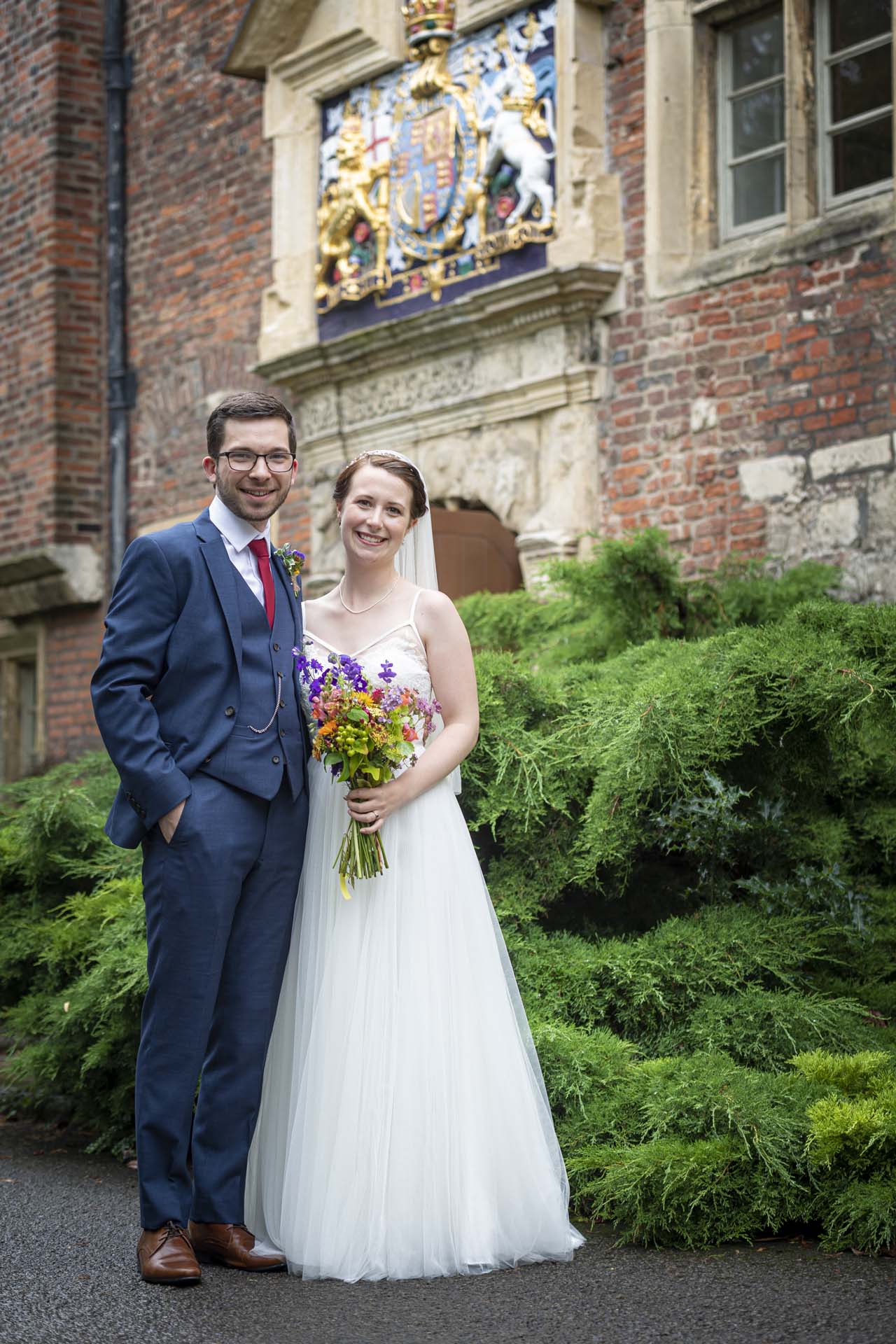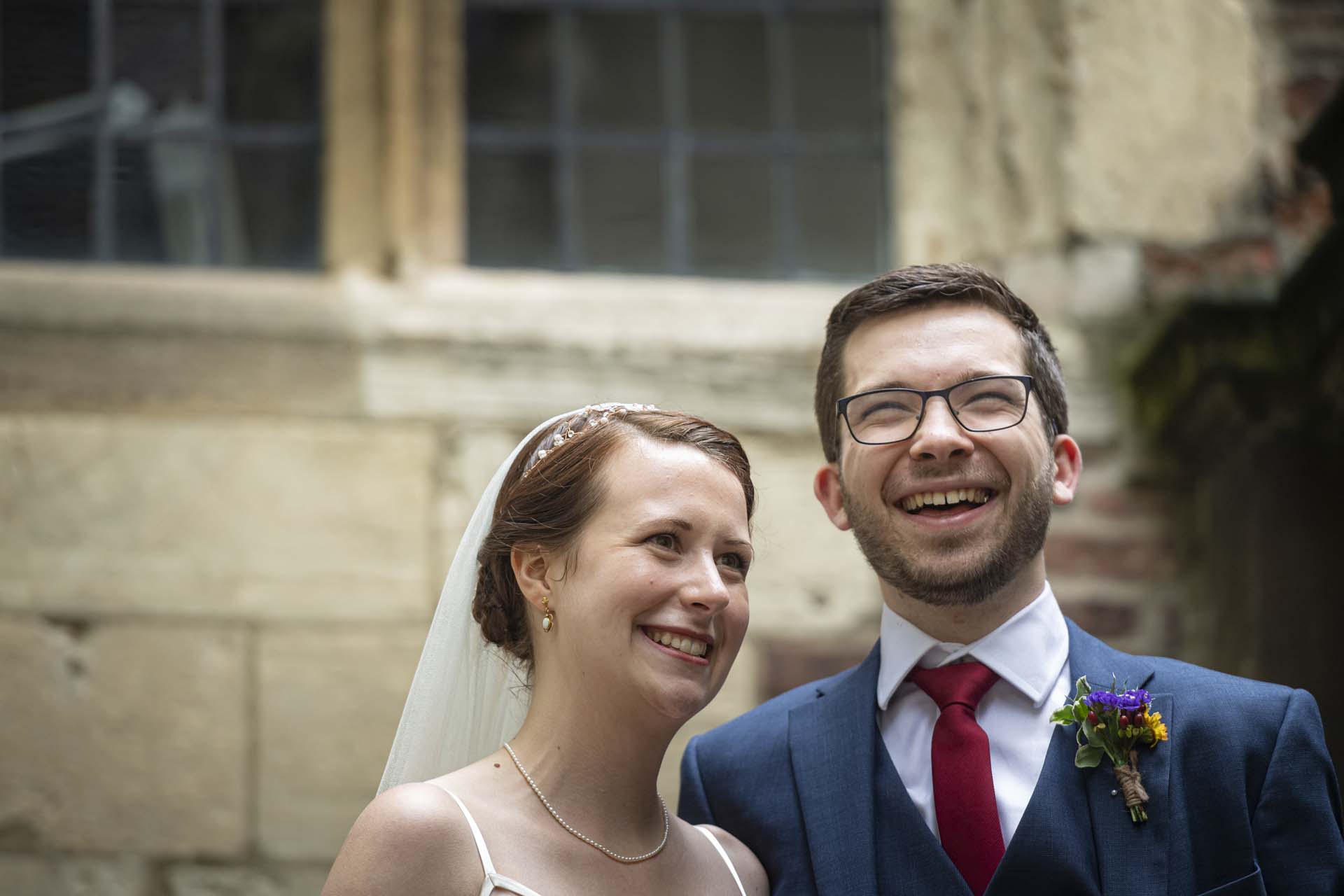Wedding Photography: The mantlepiece shot
Every wedding generates thousands of photos these days. But, despite the hunger of social media, every wedding photographer is still looking for only a small number of key shots. And ultimately, it is one shot that is the prize – the portrait of the bride and groom that will be printed at a fair size, and that will grace the mantlepieces or walls of the couple themselves and of their parents.
So, however much or little we have to photograph of the rest of the day – from bride’s preparations through to dance and farewell – it is the time given to bride and groom portraits where the most important shot of the day is likely to be had.
Unless your bride and groom have worked as models, it is likely that they will not be totally comfortable with the camera. They need to be helped to relax and may well need a little “direction” at first. Though once they are at ease, things normally just flow.
The most frequent question I am asked by wedding couples in this situation is “Where do you want us to look?” In this blog I want to look at that question, through the lens of one wedding. I am really grateful to Andrew and Grace for permission to plunder their bride and groom portraits wholesale!
To contact me to enquire about my wedding photography, use my Contact Form or just text (07983 787889) or email me at Andrew@AndrewKingPhotography.co.uk
Portraits of bride and groom: Where should we look?
1 Both bride and groom at the camera
The most obvious place for a bride and groom to look is at the camera. This direct portrait shot invites the viewer of the photograph to meet the couple, as they are, on their wedding day. It is the most frequent candidate for the mantlepiece shot – a classic portrait look which has been used and re-used over the years. Even so, there are many variations on it. Here are a few.
2 One of bride or groom at the camera
There are more variations on the theme of either the bride or the groom looking at the camera, because the range of possibilities of where the other one is looking is obviously vast. However, in practice there are probably fewer shots taken this way, and those that are tend to have the groom looking at the bride or vice versa.
3 Bride and groom look at each other
There are many variations on this one too, the most intimate of combinations. Faces can communicate at a distance, or close up, or touching, or kissing. It would be unusual to have a kissing mantlepiece shot, but not unheard of. Suffice to say that the bride and groom need to be comfortable with you.
By and large I avoid asking them to kiss for my camera: couples that are keen to be photographed while kissing will anyway, and those that aren’t keen won’t. Respect your clients.
4 At something else entirely
One of the advantages of working with two photographers is that you naturally generate images of this type. Some times they look as if the couple are looking at another camera, which is not so great, but others have a sense of movement, of travel which, when you think about it, is really the point of the occasion.
5 Other permutations are available…
There are other possibilities too. I really enjoyed photographing Andrew and Grace because we had time, because I was working with Sarah, who took many of the shots here, because I knew the couple well and they knew me and it was all very relaxed, and because their relationship was so visible in their interraction in front of the camera. One of my favourites from the sequence is this one: bride looks at groom while he soliloquizes. (And it’s not every day I get to type that!)
That will be all for this blog – I hope it’s a help to budding wedding photographers and also to wedding couples.
























